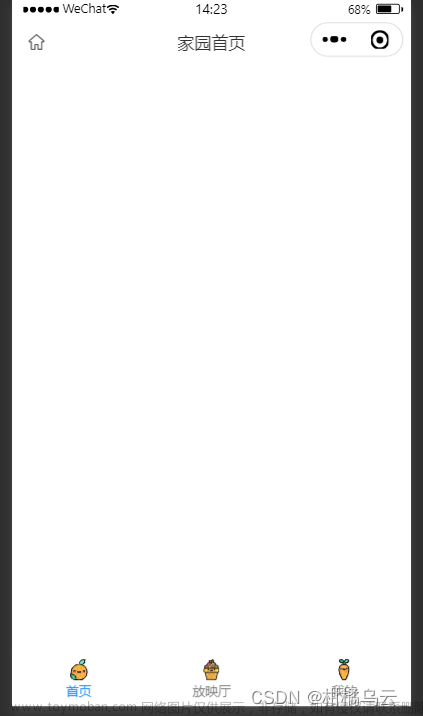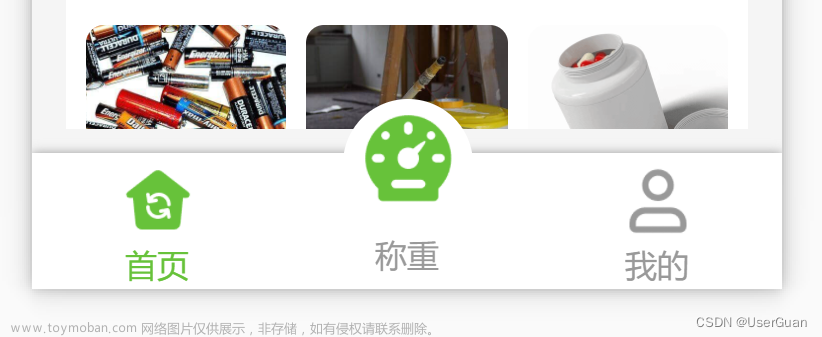简单适配小程序胶囊和APP
首先把要用的API搞一起,封装一手
主要用到两个,设备系统信息和胶囊按钮信息
uni.getSystemInfoSync()
uni.getMenuButtonBoundingClientRect()
这里胶囊宽度我是直接用windowWidth减去left文章来源:https://www.toymoban.com/news/detail-678645.html
// 小程序胶囊/占位宽
getMenuButtonWidth() {
let menuButtonWidth = 0;
// #ifdef MP-WEIXIN
let menuButtonInfo = uni.getMenuButtonBoundingClientRect().left
let systemInfo = uni.getSystemInfoSync().windowWidth
menuButtonWidth = systemInfo - menuButtonInfo
// #endif
return menuButtonWidth;
},
// 导航栏
getSystemInfo() {
let globalData = {
statusBarHeight: 0, // 状态导航栏高度
navWidth: 0, //宽度
navHeight: 100, // 总体高度
navigationBarHeight: 0, // 导航栏高度(标题栏高度)
windowHeight: 0
};
// 状态栏高度
globalData.statusBarHeight = uni.getSystemInfoSync().statusBarHeight
globalData.navWidth = uni.getSystemInfoSync().windowWidth
// #ifdef APP-PLUS
globalData.navHeight = 50 + globalData.statusBarHeight
// #endif
// #ifdef MP-WEIXIN
// 获取微信胶囊的位置信息 width,height,top,right,left,bottom
const custom = wx.getMenuButtonBoundingClientRect()
// 导航栏高度(标题栏高度) = 胶囊高度 + (顶部距离 - 状态栏高度) * 2
globalData.navHeight = custom.height + (custom.top - globalData.statusBarHeight) * 2
console.log("导航栏高度:"+globalData.navHeight)
// #endif
globalData.windowHeight = uni.getSystemInfoSync().windowHeight - globalData.navHeight - globalData
.statusBarHeight
return globalData
}
}
然后整个导航栏开始封装
<template>
<view class="">
<view class="myNavBox">
<view class="statusBox" :style="{height:statusHeight +'px'}"></view>
<view class="customBar" :style="{height:customHeight+'px',paddingRight:menuButtonWidth+'px'}">
<view class="left">
<u-icon v-if="isBack" name='arrow-left' size='28' color="#666666"></u-icon>
<slot v-else name='left'></slot>
</view>
<view class="center" :style="{left:customWidth+'px'}">
<view v-if="title!==''" class="">
{{title}}
</view>
<slot v-else name='center'>
</slot>
</view>
<view class="right">
<slot name='right'></slot>
</view>
</view>
</view>
</view>
</template>
<script>
export default {
props: {
isBack: { //是否显示返回按钮
type: [Boolean, String],
default: false
},
rIsNull: { //右侧占位
type: [Boolean, String],
default: false
},
title: {
type: [Boolean, String],
default: ''
}
},
data() {
return {
statusHeight: 20,
customHeight: 0,
customWidth: 375,
menuButtonWidth: 0
}
},
mounted() {
this.statusHeight = this.$utils.getSystemInfo().statusBarHeight;
this.customHeight = this.$utils.getSystemInfo().navHeight;
this.customWidth = this.$utils.getSystemInfo().navWidth / 2;
this.menuButtonWidth = this.$utils.getMenuButtonWidth();
}
}
</script>
<style lang="scss" scoped>
.myNavBox {
width: 100%;
background: $my-nav-bgColor;
.statusBox {
width: 100%;
}
.customBar {
width: 100%;
/* #ifdef MP */
box-sizing: border-box;
/* #endif */
position: relative;
@include flexContent('', between);
.left,
.right {
height: 100%;
display: flex;
align-items: center;
box-sizing: border-box;
}
.center {
position: absolute;
transform: translateX(-50%);
font-size: 36rpx;
font-family: PingFang SC-Bold, PingFang SC;
font-weight: bold;
color: #333333;
}
}
}
</style>
我这里直接把全部代码扔上去了,主要思路就是flex布局,然后中间的模块通过定位居中,这样就不会被胶囊影响到,导航栏高度就等于状态栏+胶囊高度,APP的就是状态栏+自己给个固定高度。文章来源地址https://www.toymoban.com/news/detail-678645.html
到了这里,关于uniapp 封装自定义导航栏的文章就介绍完了。如果您还想了解更多内容,请在右上角搜索TOY模板网以前的文章或继续浏览下面的相关文章,希望大家以后多多支持TOY模板网!











